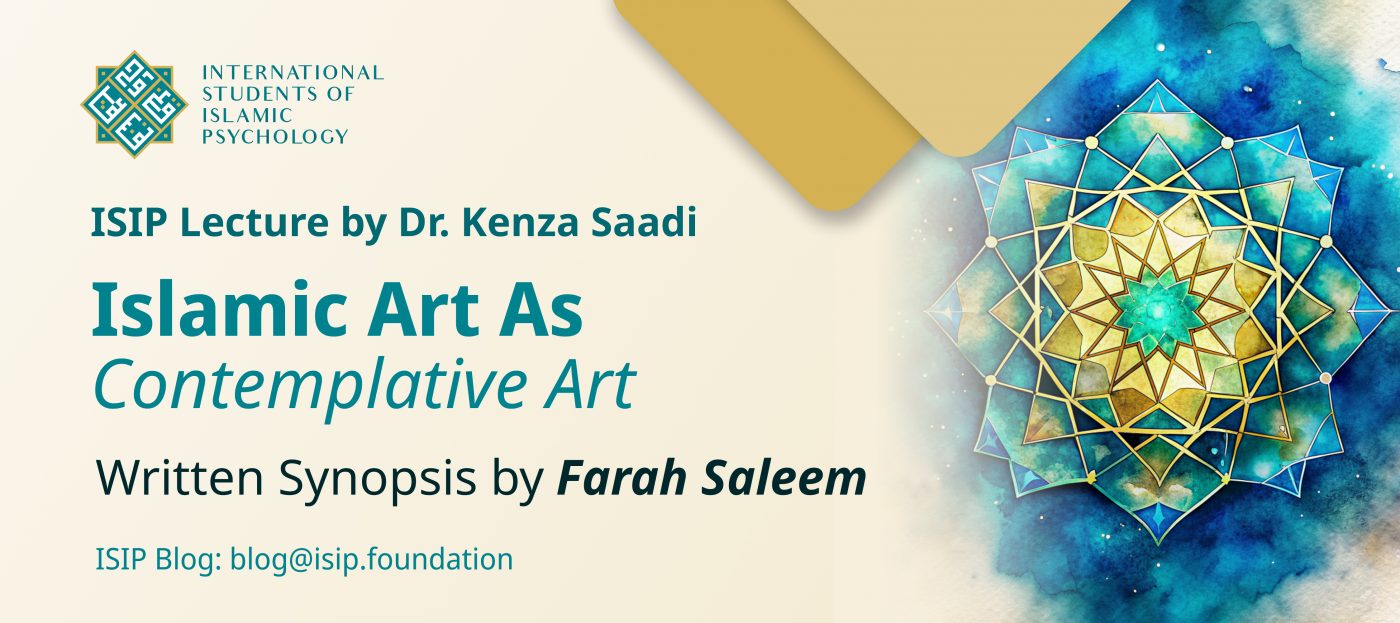
In April 2024, ISIP had the honour of hosting Dr. Kenza Saadi for Our International Lecture Series. After being a humanitarian worker in war zones for more than 20 years, Dr. Saadi turned to beauty by teaching art history. She also advises and conducts counselling for people on the neurodivergent spectrum and their caretakers.
In this talk, Dr. Kenza Saadi explored the concept of Islamic Art as Contemplative Art. She took the audience on a virtual excursion through her photos, giving explanations to assist us with grasping the true meaning of Islamic art. Dr. Kenza started by talking about the key ideas of Islamic art. She explained Tawheed, which emphasizes the indescribable nature of God and the absolute oneness of Allah. It is critical to comprehend that God’s attributes do not characterize Him, as they would restrict His transcendence. This distinction is crucial when discussing sacred art.
The culture from which Islamic art originates had an impact on it. In the eighth hundred years, Byzantine art, characterized by little mosaic pieces forming calligraphy, was overwhelming. Islamic art is non-iconic and does not include pictures during prayer. The Quran is the expression of God and is heavenly, making it difficult to emulate. The reason for Islamic art is to contemplate God’s creation and the truth of life, leading to understanding of faith and return to Oneness. Thus Art provides a means of reflection.
Dr. Kenza also emphasized the significance of light as a heavenly reality that can’t be completely communicated through words. It makes sense of thorough notions of brilliance, resplendence and glory. Art can lead one to the inexpressible, not as a portrayal of God, but rather for the purpose of catching His substance through various shades. The utilization of light and dark contrasts in Islamic art has been visible in different designs, like the Madrasa in Morocco, creating a contemplative environment.
Beauty, known as Husn in Islam, draws people towards it. The Quran empowers the admiration of beauty in the world, including a large number of varieties, structures, and shapes. To truly appreciate beauty, one must act ethically because it is not only external but also internal. The heart is where the real beauty is. Islamic art expects to stir this beauty inside and around us. It is not a means of worship but rather a tool for contemplation. Islamic art, like the mosaic-adorned entrance to a masjid in Iran, demonstrates the intention to create places of contemplation where one can engage in prayer and Dhikr (remembrance of God) while marvelling at the creation. Tadabbur (contemplation) and Tafakkur (reflection) are intrinsic parts of prayer.
Dr. Kenza then examined the demonstration of reading the Quran. It involves having a sensory experience and appreciating the manuscripts’ beauty, calligraphy’s elegance, and the pages’ texture. The recitation of the Quran, whether quietly or aloud, additionally adds to the insightful experience. The Quran has a “theurgic power,” assisting people with figuring out the presence of the Heavenly.
Toward the end of the lecture, different pictures of masjids were introduced to bring out various sentiments and feelings. The concept of space was explored with three degrees of insight: katif (dense), latif (subtle), and altaf (supra-subtle). Sacred spaces can provoke various degrees of perception inside people. Dr. Kenza explained the contrasts between light and shadow, which represent life and death, emptiness and fullness. The Quran mentions the blind and the seeing not being the same.
The lecture concluded by emphasizing that Islamic art doesn’t include all that nor reject everything. It aims to be in line with the teachings of the Quran and Sunnah.
Link to Lecture: https://youtu.be/pSWP_aVxBDc?si=lBSAm_1o7VC2bHuw
